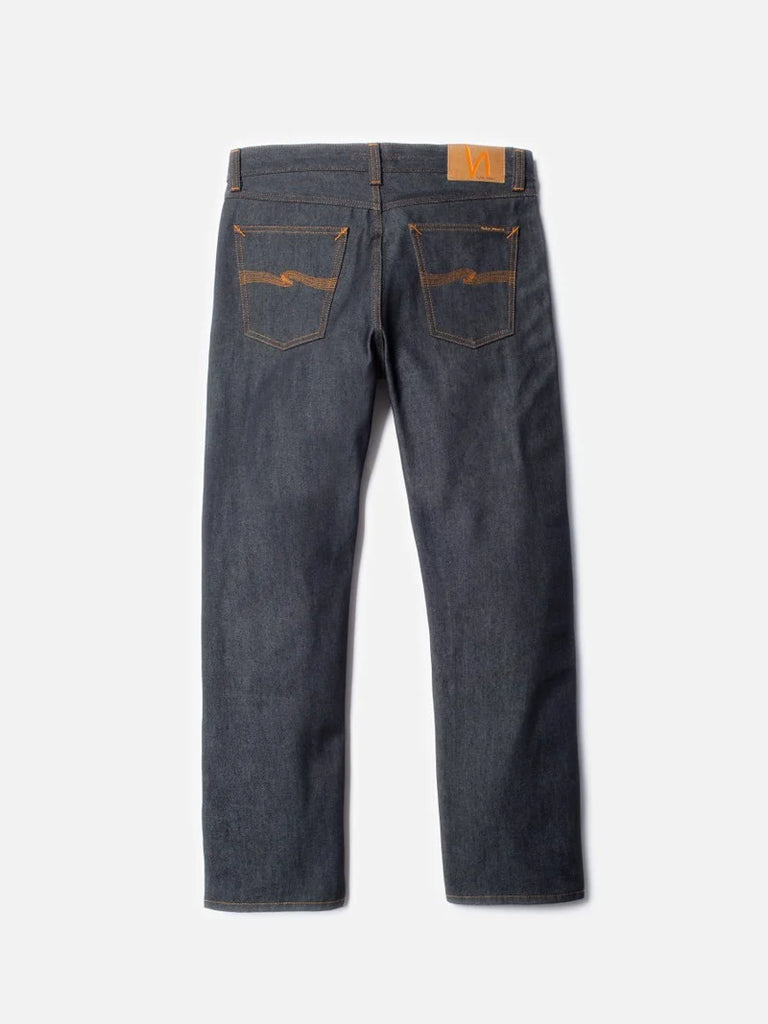Nudie Jeans co
Nudie Jeans Co Rad Rufus Dry Heavy
£145.00




Nudie Jeans co
Nudie Jeans Co Rad Rufus Dry Heavy
£145.00
Regular fit jeans with a straight leg made with rigid, 14.9 oz heavy denim. Made from organic cotton.
Regular fit jeans with a straight leg made with rigid, heavy denim. This one is a "best-of-the-90s" washed option with great texture. It's a heavy, 15 oz., Turkish denim, with great potential. After some wear and wash, the yarns will interact and you'll reap the rewards that ring spun and open-end yarns create — that typical 90s marbling effect. It's the combination of yarn spinning methods that render the marble texture. The built in tension formed by the yarns gives the denim a puckering texture that becomes more pronounced with wearing and washing. Much like the best Japanese denim, this Turkish denim, developed by Orta, is dyed in pure indigo to an almost black indigo tone. Like all pure indigo dyed denim, this one ages to a clean, blue redcast tone. clean blue hue. The initial deep tone will allow for some nice highs and lows as your pair makes their way to vintage denim status. Enjoy.
Climate and Water
Average emission of CO2 for producing this product.
Total Primary data:
(Nudie Jeans primary data)6.4 kg 74%
Total Average data:
(Nudie Jeans average data)1.3 kg 15%
Total Kering:
(Kering’s environmental KPIs)1 kg 11%
Average usage of water for producing this product.
Total Primary data:
(Nudie Jeans primary data)70 kg 13%
Total Average data:
(Nudie Jeans average data)161 kg 29%
Total Kering:
(Kering’s environmental KPIs)326 kg 59%
Production
-
Raw Material
The supplier and origin of raw material.
-
Yarn Process
The suppliers involved in turning raw material into yarn.
-
Fabric Process
The different process steps and the suppliers involved in turning yarn into fabric.
-
Trims
The different trims and their suppliers used for the garment.
-
Manufacturing
The different steps and units involved in the manufacturing of the garment.
-
Supplier of Product
The supplier from which the garment is purchased.
-
Transportation
The route which the garment is transported.
-
Warehouse
The warehouse location.
Care Instructions
Wash only when needed. But when you do, always follow the care instruction, and you’ll enjoy your garment longer.
-
Machine wash 40°
-
Do not bleach
-
Do not tumble dry
-
Iron at low temperature
-
Do not dry clean
- May dry or wet bleed
- May shrink up to 3%
- Please stretch inseam while damp
- Wash inside out with similar colours






